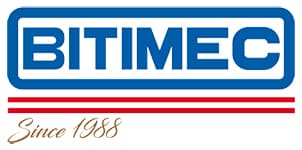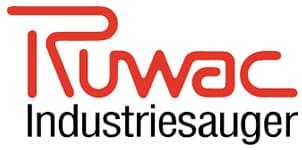Investing in high-quality cleaning machines is only the first step towards maintaining a clean and efficient workplace. To get the most out of these machines, it’s essential that your staff is properly trained to use them safely and efficiently. Proper training not only ensures that the machines are used correctly but also prolongs their lifespan, reduces maintenance costs, and increases productivity. Here’s a guide on how to train your staff to use cleaning machines effectively.
Full Training Upon Delivery: Start on the Right Foot
When you receive new cleaning machines, it’s crucial to begin training immediately. This ensures that all employees are familiar with the equipment from the start.
Schedule a Training Session:
- Immediate Training: Arrange for a comprehensive training session as soon as the new machines arrive. Involve the equipment supplier or a specialist to provide expert instruction, ideally upon delivery of the machine.
- Hands-On Demonstration: The training should include a hands-on demonstration of the machine in action. Employees should be shown how to operate the machine, perform routine checks, and carry out basic maintenance.
Training Materials:
- Instruction Manuals: Ensure that all employees have access to the machine’s instruction manual. Encourage them to read through it and refer to it when needed.
- Training Videos: If available, use training videos provided by the manufacturer. These can be a valuable resource for visual learners and can be revisited as needed.
Encourage Questions:
- Open Dialogue: Encourage your staff to ask questions during the training session. This helps to clarify any uncertainties and ensures that they feel confident in using the new equipment.
- Address Concerns: Address any concerns or hesitations employees may have about using the new machines. Understanding and comfort are key to effective operation.
Create a Comprehensive Training Guide or Checklist
A detailed training guide or checklist is an essential tool to ensure that all employees are thoroughly trained. This guide should cover all aspects of the machine’s operation and maintenance.
Key Sections to Include:
- Machine Overview:
- Purpose: Explain the purpose of the machine and the specific tasks it’s designed to handle.
- Key Features: Highlight the key features of the machine, such as safety mechanisms, adjustable settings, and any special functions.
- Operation Instructions:
- Start-Up Procedures: Provide step-by-step instructions on how to start the machine, including any pre-operation checks.
- Operating Procedures: Detail the correct operating procedures, including how to adjust settings, control speed, and use the machine efficiently.
- Shut-Down Procedures: Include clear instructions on how to properly shut down the machine, ensuring that it’s turned off safely and securely.
- Safety Protocols:
- Personal Protective Equipment (PPE): List the necessary PPE required when operating the machine, such as gloves, safety glasses, or ear protection.
- Hazard Awareness: Identify potential hazards associated with the machine, such as moving parts, electrical components, or chemicals, and provide guidelines on how to avoid accidents.
- Emergency Procedures: Outline what to do in case of an emergency, such as a machine malfunction or injury.
- Maintenance and Troubleshooting:
- Routine Maintenance: Provide a schedule for routine maintenance tasks, such as cleaning filters, checking fluid levels, and inspecting parts for wear and tear.
- Common Issues: List common issues that might arise during operation and provide troubleshooting tips to resolve them quickly.
- Reporting Problems: Instruct employees on how to report problems or request repairs, including who to contact and what information to provide.
- Record Keeping:
- Training Logs: Keep a record of who has been trained on each machine, including the date of training and any assessments completed.
- Maintenance Logs: Maintain a log of all maintenance performed on the machines, ensuring that they are serviced regularly and any issues are documented.
Conduct Regular Refresher Training
Training shouldn’t be a one-time event. Regular refresher training sessions are essential to ensure that all employees remain proficient in using the cleaning machines.
Scheduled Refreshers:
- Annual Training: Schedule annual refresher training sessions for all employees. This helps to reinforce best practices and ensures that newer staff members are brought up to speed.
- Update Training: If there are updates to the machines or new features added, conduct a special training session to cover the changes.
On-the-Job Training:
- New Hires: Include training on cleaning machines as part of the onboarding process for new employees. Ensure they are comfortable with the equipment before allowing them to use it unsupervised.
- Mentorship: Pair new employees with experienced staff members who can provide on-the-job training and support as they learn to use the machines.
Emphasise the Importance of Safety
Safety should be the top priority when training employees to use cleaning machines. Emphasise that proper use of the equipment not only ensures efficiency but also prevents accidents and injuries.
Safety First:
- Mandatory PPE: Ensure that the use of personal protective equipment is non-negotiable. Provide all necessary PPE and make it clear that it must be worn at all times when operating the machines.
- Safety Drills: Conduct regular safety drills that include scenarios involving the cleaning machines. This prepares employees for potential emergencies and reinforces safe operating procedures.
Continuous Monitoring:
- Supervision: Monitor employees, especially new ones, as they use the machines to ensure they are following safety protocols.
- Feedback Loop: Create a feedback loop where employees can report any safety concerns or suggest improvements to operating procedures. This encourages a culture of safety and continuous improvement.
Evaluate and Improve Training Programs
To ensure that your training program remains effective, it’s important to regularly evaluate and improve it based on feedback and observed performance.
Assess Competency:
- Skill Assessments: Conduct regular assessments to gauge employee competency in using the cleaning machines. This could be in the form of practical tests or quizzes on safety procedures and machine operation.
- Performance Reviews: Include machine operation and safety practices as part of employee performance reviews. Recognise those who consistently follow best practices and provide additional support for those who need it.
Gather Feedback:
- Employee Input: Encourage employees to provide feedback on the training program. Ask what they found helpful, what could be improved, and whether they feel confident using the machines.
- Continuous Improvement: Use this feedback to make continuous improvements to the training program, ensuring it remains relevant and effective.
Proper training is essential to ensure that your staff uses cleaning machines safely and effectively. By providing comprehensive training upon delivery, creating a detailed training guide, conducting regular refresher sessions, and emphasising safety, you can maximise the efficiency and lifespan of your cleaning machines. This not only ensures a clean and safe work environment but also enhances productivity and reduces costs in the long run. Investing time and resources in thorough training will pay off in the form of well-maintained equipment and a competent, confident workforce.


